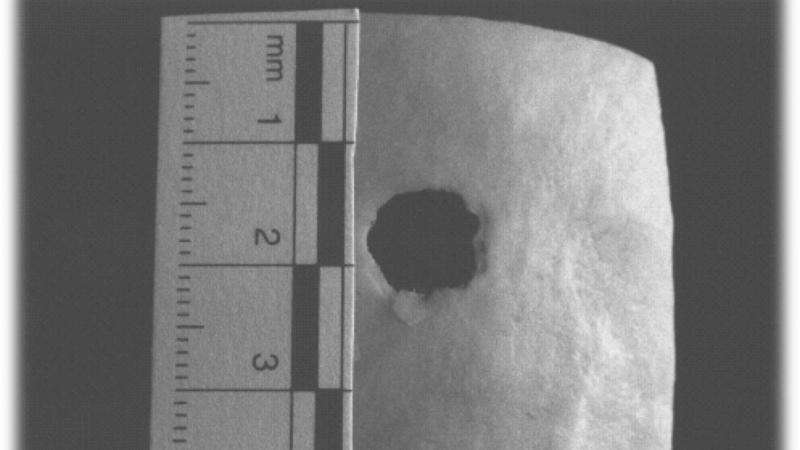Forensic research finds bone density affects size of bullet holes

A proof-of-concept study from North Carolina State University finds that the density of bones in the skull affects the size of bullet holes in the skull. The finding is useful for law enforcement officials and medical examiners seeking to identify the caliber of firearms that have been used to commit murder.
"Very often, it's not possible to retrieve bullets in cases where victims have been shot in the head, and determining a bullet's caliber can be useful during murder investigations," says Ann Ross, a professor of biological sciences at NC State and senior author of a paper describing the work. Ross is a forensic anthropologist who has worked extensively on forensic investigations in the United States and abroad.
"We wanted to know if the bone density at the site of the wound makes a difference to the size of the bullet hole – and, if so, how that might affect any estimate of the bullet's caliber," Ross says.
Previous research by Ross had determined that skull thickness and bullet caliber could affect the size of the "minimum diameter" entry wound in the skull.
For this proof-of-concept study, Ross and undergraduate student Anna Paschall evaluated the bone density of 18 skulls – all had been victims of gunshot wounds to the head – for which the bullet caliber was known.
"Based on this small sub-sample, we found that the strongest correlation was between bone density and minimum diameter size of the entry wound," Ross says. "The second highest correlation was between bullet caliber and minimum diameter size. That tells us that bone density is an important variable.
"We need to replicate this with a larger sample size, but it's clearly an important area for future work," Ross says.
The researchers also found that bone density and skull thickness did not correlate. This is an important observation, because previous research – including Ross's own work – had used skull thickness as a proxy for density.
Ross and Paschall also looked at minimum diameter wounds in a sample of 169 skulls for which they did not have bone density information. They found that, without that bone density information, minimum diameter size allowed them to estimate whether a bullet was small caliber (up to .32 caliber) or large caliber – but they couldn't be more specific than that.
"We're optimistic that, with additional research, we'll be able to use bone density and minimum diameter to provide much more accurate estimates of bullet caliber to the authorities," Ross says.
More information: Anna Paschall et al. Bone mineral density and wounding capacity of handguns: implications for estimation of caliber, International Journal of Legal Medicine (2016). DOI: 10.1007/s00414-016-1420-6
Provided by North Carolina State University





















